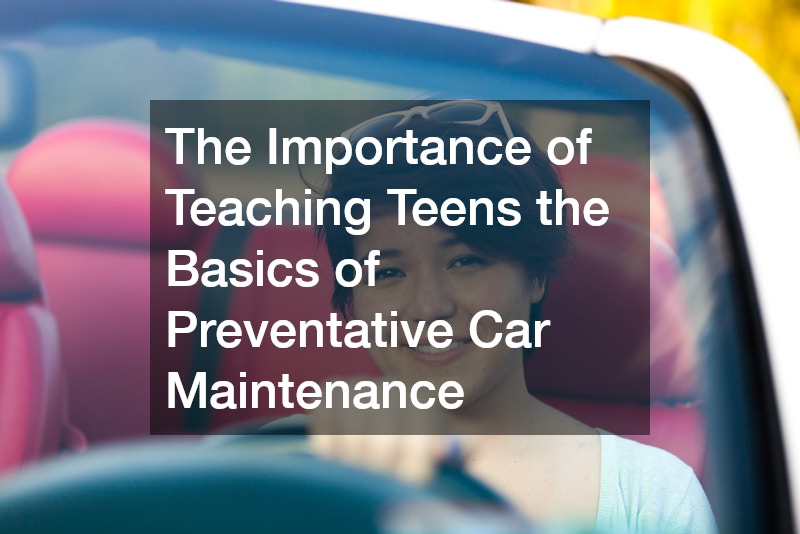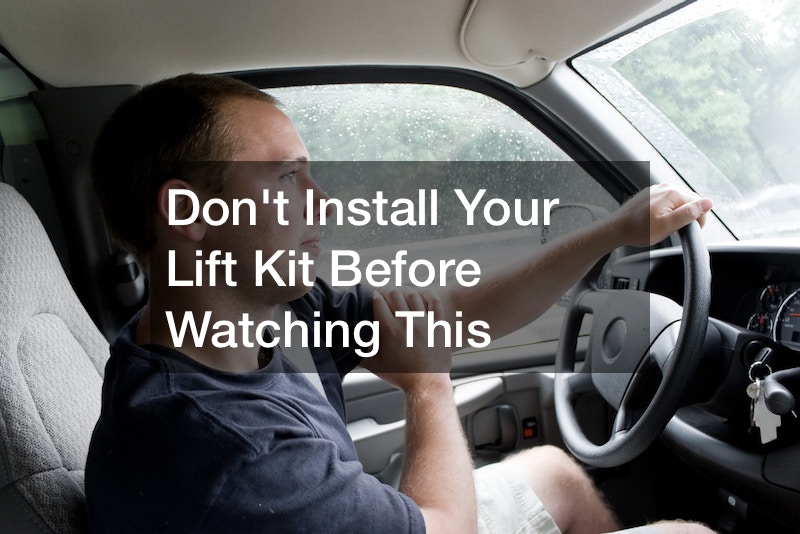
The Importance of Teaching Teens the Basics of Preventative Car Maintenance

Handing over the keys to a teenager is a major milestone. It’s one filled with excitement, anxiety, and a newfound sense of freedom. Yet behind the wheel lies a world of responsibility, and one crucial area that often goes overlooked is the importance of preventative car maintenance. This simple concept can be the difference between a car that runs safely for years and one that causes stress and unexpected bills. Starting early with basic maintenance education sets the tone for responsible vehicle ownership and helps build confidence in new drivers.
When young people learn how to care for their vehicles, they not only protect the investment but also contribute to road safety and sustainability. Many car problems that seem sudden are preventable with a bit of routine care. Teens may not realize that poor maintenance habits can lead to breakdowns, costly repairs, or even accidents. Teaching them the value of checking on their car’s condition regularly is as vital as teaching them to drive safely in the first place.
This article will walk through foundational topics every teen driver should understand. From the significance of proper wheel alignment to the role of regular service checks, each section introduces a real-world concept tied to long-term vehicle performance. These lessons are more than just chores—they’re skills for independence, accountability, and smart financial habits. By connecting teens with the essentials of maintenance, families can foster a deeper sense of awareness on and off the road. Let’s explore how small steps can lead to a smoother, safer driving experience.
Starting with Safety

Teaching teens about safety should begin with the basics of how their vehicle operates and how small misalignments can lead to big issues. Among the most important lessons is understanding how a vehicle’s wheels need to be properly calibrated to ensure safe and smooth driving. Even if the vehicle appears to drive normally, neglecting alignment can result in gradual wear and tear that compromises control and safety.
Specifically, poor tire alignment affects more than just the comfort of the ride. It impacts steering, tire wear, and fuel economy. Teens may not notice that their car pulls slightly to one side or that they’re constantly adjusting the wheel to drive straight. These signs are subtle, but they signal an underlying problem that can worsen over time. Explaining the connection between vehicle performance and alignment helps young drivers understand how regular checks prevent costly consequences.
By tying this concept to preventative car maintenance, parents and instructors can show teens how to extend the life of their vehicle and avoid dangerous situations. Wheel alignment isn’t just a service for when something feels “off.” It’s a proactive step in maintaining full control behind the wheel and staying ahead of potential hazards.
Understanding the Wheels
Once teens understand alignment, the next step is knowing where to go for help. Becoming familiar with local tire shops gives them a resource when their vehicle needs new tires, a pressure check, or seasonal replacements. Learning how to select a reliable place for tire services helps them develop a sense of confidence in managing their car’s needs.
Tire shops are more than just retail centers; they’re crucial to keeping a vehicle in safe working order. Many offer free inspections or basic guidance, which is especially helpful for teens who are still learning what signs to look for, like tread wear or sidewall damage. Even better, teens can be taught to build relationships with these shops and ask the right questions when they need assistance.
Incorporating tire shops into a preventative car maintenance plan reinforces the idea that caring for a vehicle is an ongoing responsibility, not a one-time event. Encouraging young drivers to understand their options and make informed choices can set the foundation for smart habits that last into adulthood.
When the Car Pulls

A reliable mechanic can be a teenager’s best ally when things start to go wrong, or before they do. Finding a trustworthy professional to inspect a vehicle, explain problems, and offer affordable solutions gives young drivers a sense of support and guidance. Teaching teens how to talk to a mechanic and understand their recommendations is a key part of being a prepared vehicle owner.
In practice, teens may not know when something is off with their car. Whether it’s a strange noise, a jerking motion, or that unsettling pull on the steering wheel, many symptoms of trouble go unreported because new drivers don’t know they matter. Encouraging open communication with a qualified mechanic allows these issues to be addressed before they become expensive repairs.
When preventative car maintenance includes knowing how to consult with a mechanic, it becomes a team effort. Rather than ignoring warning signs, teens are empowered to act early and wisely. This approach builds trust, responsibility, and long-term savings.
Finding Trusted Help
As teens begin managing their transportation, understanding where and how to get general vehicle service is crucial. Auto repair centers play a fundamental role in keeping cars safe and efficient, especially when minor issues are caught early. Educating young drivers about when to seek professional repairs builds trust in the value of proactive upkeep.
Auto repair facilities vary widely in quality and specialization. Teens should be encouraged to research nearby shops, ask for referrals, and learn how to compare services and prices. Teaching them to look for certifications or read online reviews helps ensure they aren’t taken advantage of, especially during their early experiences with car ownership.
Incorporating auto repair as part of preventative car maintenance emphasizes the importance of timely intervention. Routine service, even for minor problems, reduces the risk of breakdowns and protects against unsafe driving conditions. Helping teens become comfortable in these spaces prepares them for a lifetime of responsible car care.
What Keeps It Running

Few maintenance tasks are as essential, or as commonly forgotten, as regular oil changes. For teens, understanding this simple service can make a huge difference in how long their car lasts. Oil lubricates the engine, prevents overheating, and minimizes wear. When neglected, it can lead to serious engine damage and steep repair costs.
It’s important for new drivers to learn how often their car needs an oil change, what type of oil it uses, and how to check the levels. Some may even benefit from watching a tutorial or helping with a change at home. Even if they don’t perform it themselves, recognizing the signs of low or dirty oil empowers them to schedule service in time.
Framing oil changes as a core part of preventative car maintenance shows how routine actions can prevent major problems. The habit of tracking and scheduling this task teaches teens about long-term care, consistency, and the hidden systems that keep their vehicle running.
More Than Just Fuel
While gas stations may seem like simple pit stops, they offer teens many small opportunities to care for their cars. Beyond filling the tank, these stations often provide air for tires, windshield cleaning supplies, and even basic fluids. Teaching young drivers to use these tools responsibly is a gateway to developing self-sufficiency on the road.
For instance, checking tire pressure during a fill-up or topping off washer fluid can become an easy habit. Some stations also have service centers or provide advice, making them more valuable than just a fuel source. Encouraging teens to look around and take stock of available amenities gives them a sense of readiness.
Integrating gas station routines into preventative car maintenance means helping teens take small, consistent steps. It’s not just about avoiding an empty tank—it’s about using every stop as a chance to make sure the car is performing at its best. These simple actions reinforce good habits and early detection of issues.
The Power of a Checkup

Vehicle inspections might seem formal or intimidating to new drivers, but they are an important part of keeping a car road-ready. Whether required by law or done voluntarily, inspections help uncover issues that aren’t always visible. Teaching teens what these evaluations involve gives them a better sense of their car’s condition.
During a typical vehicle inspection, mechanics will check lights, brakes, emissions, tires, and more. Teens should understand that passing an inspection doesn’t just mean legality. It means reliability and safety. Learning how to prepare for one, keep documentation, and follow through with recommendations reinforces accountability.
By making vehicle inspection part of a preventative car maintenance routine, parents and educators help teens stay proactive rather than reactive. It’s about fostering awareness and emphasizing that peace of mind comes from knowing everything has been looked at thoroughly and professionally.
Routine Upkeep Matters
Preventive care goes beyond a few individual tasks. It’s about a full-picture approach to maintaining a car. Auto services often include everything from brake checks to fluid top-offs to filter replacements. Understanding how these services fit into the bigger picture helps teens realize car ownership is more than just driving—it’s about commitment.
Teens can benefit from creating a simple calendar or checklist to track what needs to be done monthly, seasonally, or annually. Many service shops offer bundled packages, and some even send reminders. Showing young drivers how to use these tools helps reduce overwhelm. It also encourages them to take charge of their vehicle’s care.
Introducing teens to the range of auto services available is important. It reinforces the message that preventative car maintenance is not a one-time lesson. It’s a mindset built on consistency, planning, and understanding the systems that keep their car and themselves safe.
Don’t Skip the Shine
While it may seem like a purely cosmetic habit, keeping a car clean plays a significant role in vehicle maintenance. Regular car washes protect the paint, prevent rust, and preserve resale value. Teach teens that cleanliness isn’t just about appearance, but also about function and longevity. It reshapes how they see this routine task.
Car washes remove harmful debris, road salt, and grime that can lead to deterioration if left untreated. Teens who live in regions with harsh winters or coastal salt air should understand the risks of corrosion. Even a monthly wash can prevent damage to a vehicle’s frame and body. This is eespeciallywith one that includes an undercarriage spray,
Including car washes as part of preventative car maintenance helps reinforce that maintenance is both internal and external. By valuing the vehicle’s condition as a whole, teens can take pride in ownership and maintain their cars in a way that supports safety, aesthetics, and durability.
Being Ready for the Costs
No matter how well a car is maintained, unexpected issues or accidents can still arise. That’s why understanding car insurance is an essential part of teen driver education. Learning how policies work, what’s covered, and how maintenance can affect premiums helps teens become more financially aware and responsible.
Many insurers offer discounts for drivers who demonstrate safe habits or maintain their vehicles regularly. For example, proof of routine servicing or driving a car that’s passed recent inspections can result in lower rates. Teens should be taught to keep service records and communicate openly with their insurance provider.
By connecting car insurance with preventative car maintenance, teens can see how care and cost are intertwined. Being prepared with the right coverage and understanding how upkeep supports insurance benefits empowers them to take control of both vehicle safety and financial planning.
Lessons in Responsibility
Teaching teens the essentials of car care isn’t just about avoiding breakdowns. It’s about building confidence, responsibility, and independence. The earlier they understand the value of preventative car maintenance, the better equipped they’ll be to make smart decisions on the road and under the hood. From knowing when to schedule routine services to identifying signs of trouble, young drivers who grasp the basics are safer, more efficient, and more self-reliant.
<p>Each topic explored, from wheel alignment and tire care to inspections, services, and even car washes, shows that maintenance is a proactive, ongoing effort. These aren’t just one-time lessons, but habits that can last a lifetime. By helping teens understand where to go, whom to trust, and what to look for, parents and educators lay a foundation of awareness that carries through every mile.
Even financial aspects, such as insurance, are impacted by how well a car is maintained. When teens learn that their attention to detail can reduce risks and even lower costs, the benefits become even clearer. Preventative car maintenance becomes more than a chore—it becomes an investment in their safety and their future.
<p>Teaching preventative car maintenance to teens means giving them the tools to protect not just their vehicle, but their well-being and financial stability. It’s a lesson in preparedness, one that helps them stay on the road and in control.


